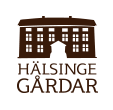Hälsingland Farms
-
- Hälsingland Farms
-
-
-
There is a rich variation of older and well-preserved farmhouses in Hälsingland, in 36 parishes over four centuries. The seven listed farmhouses represent nearly thousands of other farms in the landscape.
The Hälsingland farmers had a habit of building large and lavishly decorating rooms for celebration culminated in the 1800s. The richly painted banquet rooms were used only for important occasions in the community, such as weddings.
The farmers’ healthly income came from agriculture and cattle breeding. Many Hälsingland farmers also had income opportunities from linen manufacture and trade, as well as the sale of forest lands and felling rights.
The decorated farmhouses of Hälsingland
The seven World Heritage Farmhouses
Gästgivars
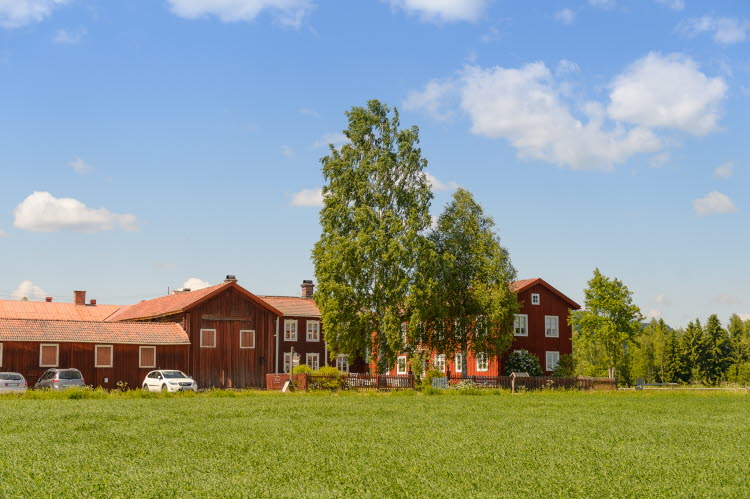
The large building for celebrations at Gästgivars in Vallsta was decorated by the trend-setting painter Jonas Wallström. He had a sound schooling, which meant that he could imitate the finest Wedgwood porcelain. He also developed the art of painting stencils in a style that spread to other parts of Sweden.
The farm name, Gästgivars, comes from the guesthouse that was run on the farm during the 17th and 18th centuries.
The farm is open for visitors in the summer. There is a visitor center, restaurant / café and shop.
Kristofers
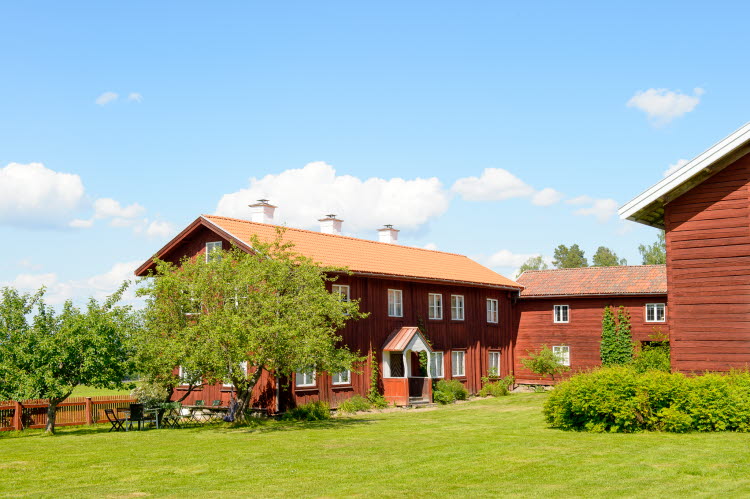
The old buildings at Kristofers on Järvsö are unique, with many well-preserved rooms divided between two floors. The structure provides particularly good insights into how individual rooms and the entire building were used for celebrations.
The farm, with its well-preserved main building, lies somewhat isolated on the outskirts of the village and offers a good view of the fields and meadows of the river valley. It has stood on the same site since the early 1800s, but had stood in the village center since at least the Middle Ages.
The farm has been in the same family for fourteen generations, they mainly engage in agriculture and forestry. The famous Swedish artist Anders Ädel decorated the interior with imaginative paintings of flowers completed freehand.
The farmhouse is shown by appointment during the summer.
Pallars
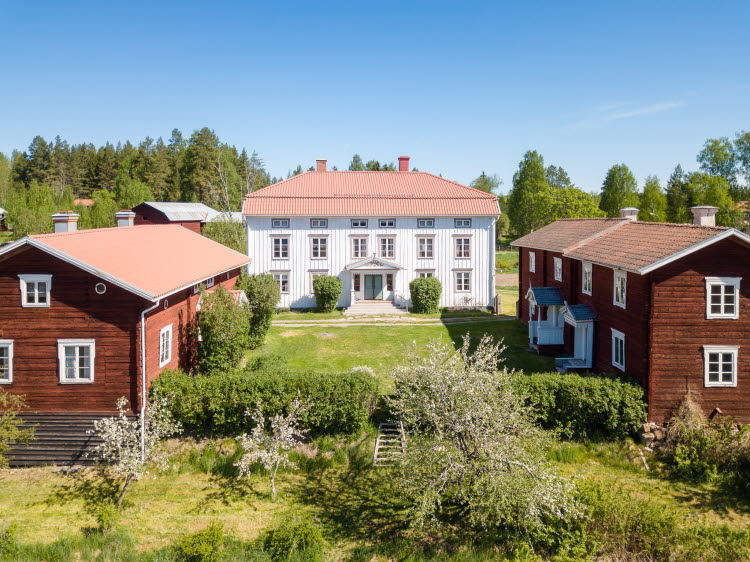
Pallars in Alfta, with both its wings, is one of the largest farmhouses in all of Hälsingland. The farmhouse got its manor-like appearance, with an unusual number of decorated entryways and carved doors, when a rich farmer’s daughter married the farm’s eldest son. It was then that the new residence was built, although the farmhouse was already large with unusually many habitable rooms before the wedding.
The famous Dalarna artist Svärdes Hans Ersson painted landscapes in the large residence; singular paintings by “Blåmålarn” – the Blue Painter – are preserved in one wing. The Blue Painter was known for using an expensive navy-blue pigment found in many farmhouses in the district. His paintings here depict many locations in Sweden, which is rarely seen in other farmhouses in Nordic countries.
The farm has been in the same family since the 1600s and is shown by appointment during the summer.
Jon-Lars
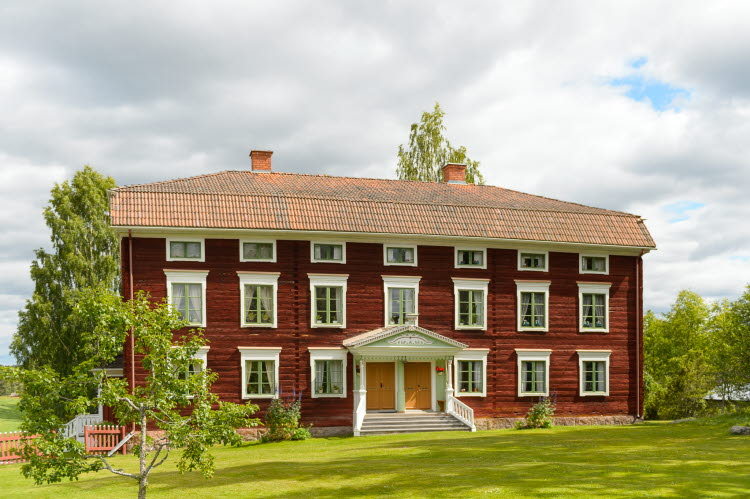
Jon-Lars in Långhed makes a show of the largest building among the farmhouses of Hälsingland. There is only one residential building on the farm, which was built into two identical parts for two brothers in the mid-1800s after the previous farmhouse was destroyed in a fire. Even the many well-preserved outbuildings were carefully constructed for two households.
The farms were normally shared by several generations, but two brothers doing so was more unusual. The two residences, which also consisted of a common hall for dances and celebrations, have entirely different decorating ideals, one of which was created by the famous Dalarna artist Svärdes Hans Ersson.
The farmhouse is further distinguished by its large, elegantly decorated entryway, which encloses the two entrances to the households as well as the exclusive turquoise paintings and French wallpaper. A salting house from the 1600s is also preserved here.
The farmhouse is privately owned and is shown by appointment during the summer.
Bortom Åa
The Bortom Åa World Heritage Farmhouse lies in the forest village of Fågelsjö, in the border district between Dalarna and Hälsingland. The area was colonized by the Finnish in the 1600s and the farmhouse – one of the oldest in the village – was built in connection with this.
A small river separates it from the other buildings in the village, which inspired its name, Bortom Åa (Beyond the Creek), even though it is also called Fågelsjö gammelgård. Its history is unusually well-documented, above all thanks to the farmer Jonas Olsson. Through the centuries, the family that owns it has been among the most well-to-do, primarily through the many business trips and good contacts that contributed to their financial well-being.
The farmhouse has paintings by Bäck Anders Hansson from Dalarna, and also rooms with expensive wallpaper. But what provided perhaps the best profit were the hand-made utility goods from the farm’s own gun forge. The last owner, Kristina – known as a frugal person who saved everything – willed the farmhouse to the municipality, and it is now shown year round.
Bommars
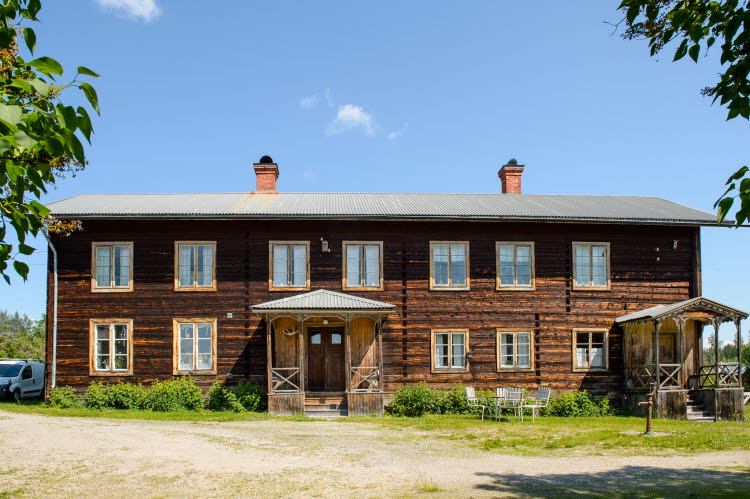
Bommars lies high on the outskirts of the Letsbo village, in a well-forested part of the long Ljusnan valley. With its stately, sun-weathered manor house, it is representative of how the wealthier farmers in Ljusdal built their farmhouses in the 1800s.
The interior and the decoration consist of wallpaper inspired by country estates, and folk paintings – a very unusual combination. Even the clothes closet is decorated with Stockholm newspapers from the 1850s.
Despite the farmhouse being unoccupied for many years, the spaces for celebration – such as the great banquet room – and the bedrooms in the manor house were extensively decorated. This clearly shows the significance of spaces used for celebrations in Halsingland. The farmhouse was mentioned as Oppigården back in 1542, but was given its current name after the two brothers.
Bommars is privately owned today, but offers guided tours, overnight stays, and events during the summer.
Erik-Anders
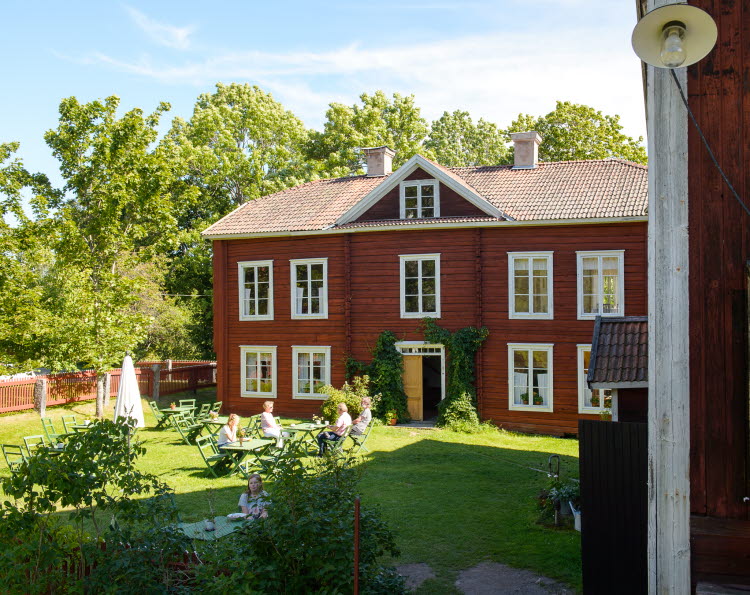
The Erik-Anders farmhouse, in the village of Asta in Söderala parish, has a manor-like structure with interior inspired by the upper class. Inside the house, the rooms stand in two rows, and there is a luxurious banquet hall on the upper floor with a similarly impressive width. The Knutes family, who were often frequently in demand, left their mark on the restrained decorations of the manor house.
Erik-Anders received its name from Erik Andersson, who had the farmhouse built in the 1820s. In the mid-1800s, one of his sons followed the religious leader Erik Jansson –along with his other followers, the renowned Janssonists – to Bishop Hill in the United States.
Today, the farmhouse is privately owned and is open to visitors during the summer. There is a hotel, café, shop and furniture exhibition here, as well as a garden that has been restored to its 1920s appearance.

